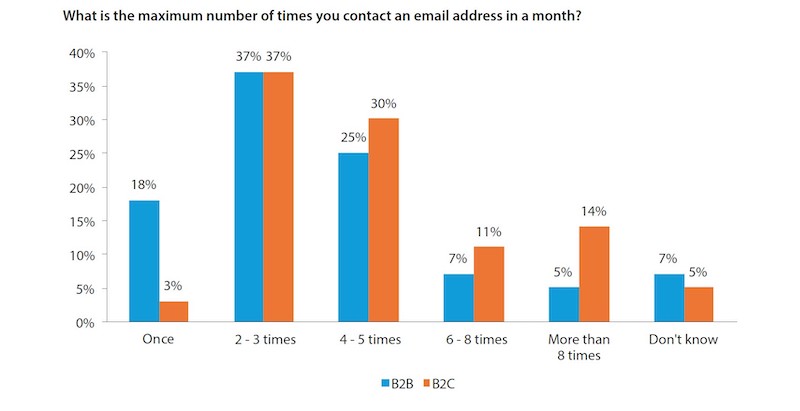
A common concern of email marketers is the delivery rate, whether emails reach subscribers’ inboxes. Mail Tester is a free service that can detect potential delivery problems — before an email is deployed.
I manage email-marketing campaigns for a large technology and data provider. I also consult with companies — B2B and B2C — on optimizing their email marketing efforts. Those clients and other businesses frequently have concerns about delivery, or spam, or other email matters. What follows are the five most common questions.
Top 5 Email Marketing Questions
How can I tell if my emails are going to the inbox folder or to junk? The answer is surprising. There is no accurate tool that can detect what folder an email goes to. Some email service providers will send a test to a few hundred seed addresses to estimate the percentage of a sender’s email that is delivered to the inbox.
For example, say an ESP sends a test to 100 email addresses. If, say, 90 of the 100 ends up in an inbox, the ESP will report a 90 percent delivery rate. This is an estimate and not a true metric of an actual deployment.
Many factors contribute to inbox delivery. Spam filters will look at the basics, such as:
- IP and domain reputation,
- Subject line and “from” line,
- Email content,
- Engagement by recipients.
Most ESPs have a tool that rates an email’s content, subject line, and domain and IP addresses. If your ESP doesn’t have a tool to detect spam, there are many free ones, such as Mail Tester.
Is email still a profitable marketing channel? Yes. There are a few reasons why email marketing generates among the highest returns on investment of any channel. First, it’s inexpensive. Second, the audience is comprised of subscribers. They have requested information from your company. Many are customers.
Moreover, consumers in 2019 rely on email for daily communication. They check activity continually.
A 2015 report from the DMA — Data and Marketing Association — showed a return of $40 for every $1 spent on email.
However, attributing revenue to email is becoming more complicated given the complexity of a consumer’s typical purchase journey. A consumer may, for example, initially click to a product page from an email campaign and then abandon that page. She then reads about the product on social media and, later, sees the listing in Google’s organic search results. Interested, she finally clicks on a Google Shopping Ad and purchases the item. Attributing the sale in that scenario is complicated and, often, unclear.
I have an older email list. Should I still use it? There is no expiration or time limit in the permission received from subscribers. Email lists, however, can churn as much as 30 percent annually, especially when there’s little activity from the sender. For older lists, senders should implement an email verification and hygiene process regularly. This will identify invalid addresses, to update or remove.
A verification report will check if an address is deliverable. Once the process is complete, a sender can attempt a delivery to those addresses. Manage this deployment carefully. Send to the newly verified addresses in stages and monitor their responses. Since they haven’t received an email recently from your company, these individuals may complain more than others of abuse or spam. Those complaints could affect the delivery of your entire list to that ISP, such as Gmail or Yahoo.
After that initial deployment, remove the addresses of subscribers that did not open it, as well as unsubscribes. You are then safe fold the newly verified addresses into your normal delivery schedule.
Can I send emails to customers even if they have not opted in? Contrary to conventional opinion, in the United States there is no opt-in requirement in the CAN-SPAM Act. It is legal to email anyone, regardless if he opted in or not.
Despite this, there are reputation factors to consider. If an individual has not opted in, she is not expecting to receive emails from your brand and is more likely complain or unsubscribe, both of which, again, can impact the deliverability of your entire list.
Thus email only those who have requested it or are otherwise interested in receiving your info. This could include new customers or prospects, even if they did not specifically subscribe. They may be a good audience to test.
Note, however, that the Canadian Anti-Spam Legislation has a strict opt-in requirement. Thus, email folks in Canada only if they subscribed directly.
How often should I send my emails? There are many factors that impact email marketing frequency. In my experience, online retailers should email once or twice per week — roughly eight times per month.
Your email frequency should follow from how often consumers visit your site. You want to be top-of-mind but not annoying, which will drive complaints and unsubscribes. The DMA polled in 2017 B2B and B2C email marketers. Thirty-seven percent of respondents for both categories said they emailed two to three times per week.

According to a DMA poll in 2017, 37 percent of B2B and B2C companies sent marketing emails two to three times per week. Overall, B2C companies sent emails more frequently than B2B. Source: Data and Marketing Association.